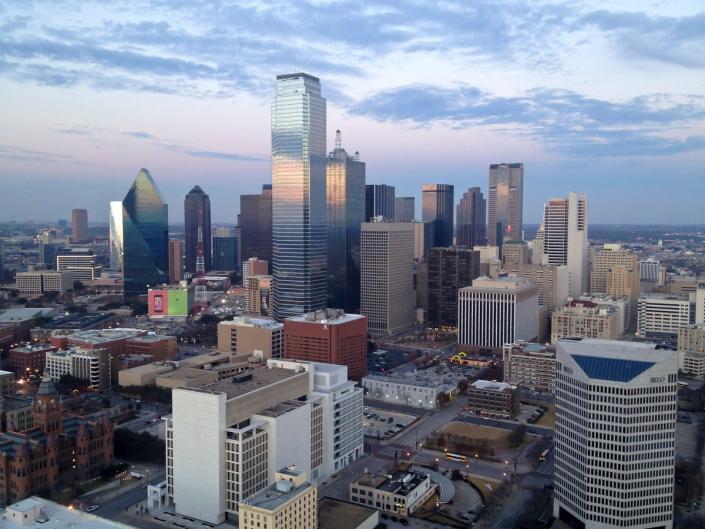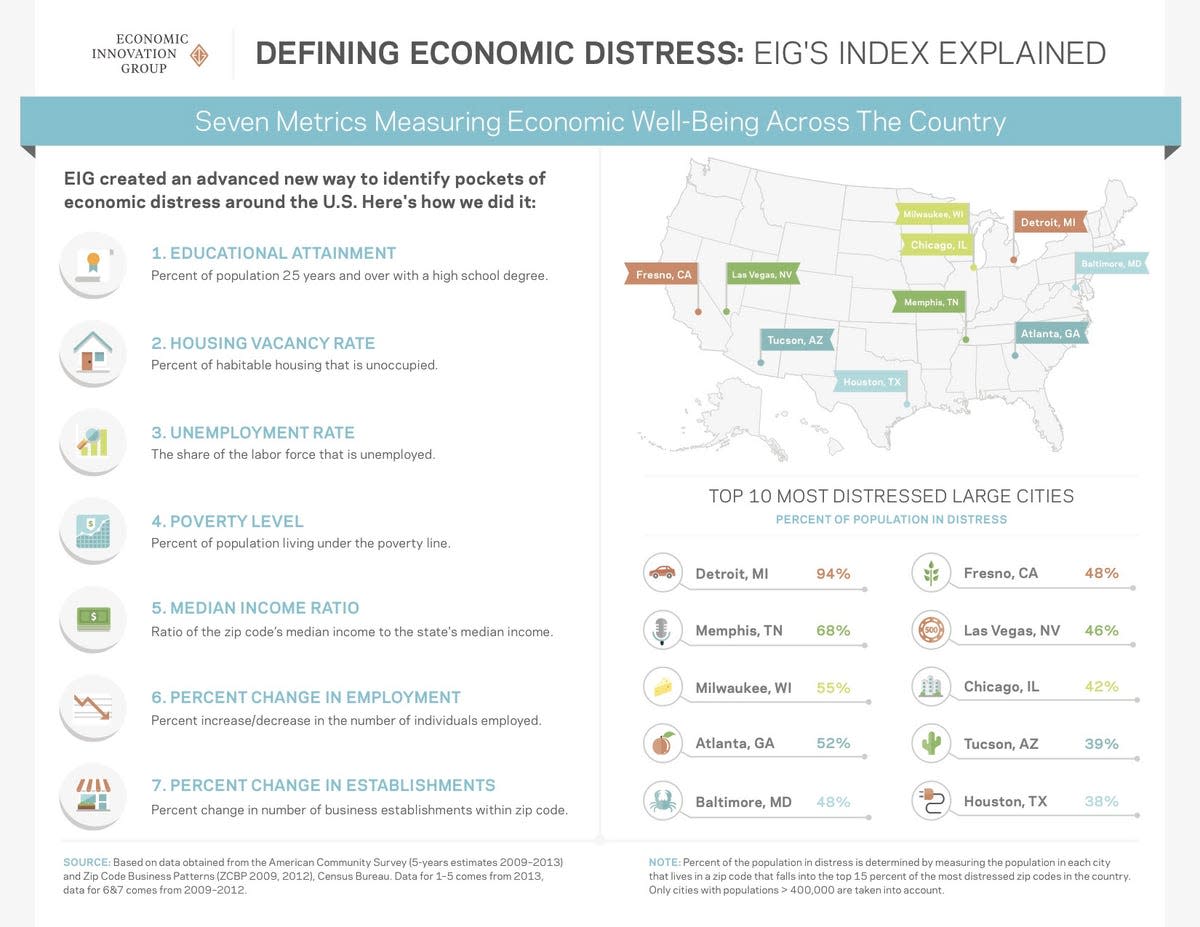There's a fascinating difference between income inequality in red states and blue states

Recent studies by the Economic Innovation Group and the Urban Institute have shown what states and cities are in most economic distress and in what cities the inequality between neighborhoods are the greatest.
In an analysis of those, The Washington Post found that the bulk of cities with the biggest inequalities were located in red states while the majority of the most-distressed cities were in blue states.
Inequality was calculated by determining a "neighborhood advantage score" based on household income, homeownership rates, housing values, and college attainment and then comparing the top 10% of Census tracts to the bottom 10% across the US.
The economic distress was determined by examining seven variables in over 25,000 ZIP codes: educational attainment, housing-vacancy rates, unemployment rates, poverty levels, median-income ratios, percent changes in employment, and percent change in establishments.
The city with the highest inequality rate is Dallas, Texas, which has not voted for a Democratic candidate for president since 1976, when it voted in favor of Jimmy Carter.
According to the Post, these are the top 10 cities with a population above 400,000 that have the biggest economic disparity (in no particular order, except for Dallas): Dallas, Austin, Fresno, Phoenix, Omaha, Kansas City, Fort Worth, Memphis, Indianapolis and Louisville.
Fresno is the only city in that group located in a blue state, with 48% of the population living in distressed areas. The least unequal city in terms of economic differences is Erie, which is in the blue state of Pennsylvania.
But among the 10 most distressed large cities in the US, six are in blue states (Fresno, Las Vegas, Chicago, Milwaukee, Baltimore and Detroit) and four are in red states (Tucson, Memphis, Houston and Atlanta). The Economic Innovation Group outlined the metrics for measuring economic distress below:

As The Washington Post points out, some of the cities with the highest amounts of inequality are led by Republican governors and could become targets for the Democrats in the 2016 election.
Democratic presidential frontrunner Hillary Clinton has made income disparity a key focus of her campaign thus far, amid a broader push by the Democratic Party.
NOW WATCH: This animated map shows how the states voted in every presidential election since the Civil War
See Also:
This map shows which US states are in the most economic distress
These 2 US cities have the highest and lowest levels of social and economic inequality
US government and business are systematically defrauding and exploiting the poor
SEE ALSO: The 10 most distressed large cities in America

